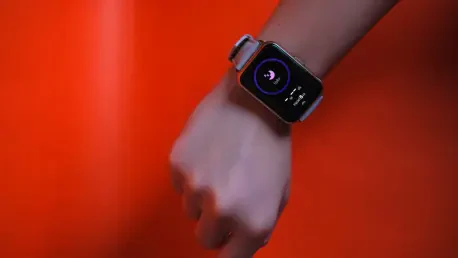In the fast-evolving landscape of wearable technology, Whoop has again made a significant impact with the introduction of Whoop 5.0 and Whoop MG. These new devices continue Whoop’s trend of blurring the lines between cutting-edge health monitoring features and everyday usability. Coming on the heels of the Whoop 4.0, these iterations not only cater to professional athletes and fitness enthusiasts but also extend their appeal to a broader base of health-conscious consumers. By tapping into this larger demographic, Whoop is setting a new standard for how personal health can be monitored and managed through advanced technology, empowering users to take charge of their wellness with tools once thought exclusive to medical professionals.
New Horizons in Health Metrics
Enhanced Tracking Features
The Whoop 5.0 and MG models offer key advancements in tracking crucial health metrics such as sleep patterns, physical activity, and overall recovery. These features are designed to provide users with comprehensive insights into their daily wellness routines. While these functionalities are common in the market, Whoop distinguishes itself by integrating capabilities inspired by other leading wearables, such as the Apple Watch and Samsung Galaxy. The main difference in Whoop’s approach is its focus on providing a holistic view of health through features like ECG and blood pressure monitoring, especially in the Whoop MG model. This makes it a viable option for users seeking deeper health insights, traditionally requiring separate medical equipment.
Advanced Labs Features
The introduction of the Advanced Labs feature marks a bold step towards integrating professional medical consultations into wearable technology. This option allows users to schedule blood tests and consult healthcare professionals for a detailed interpretation of their data collected by the device. Though this service comes with an additional cost and is set to follow the launch, it sets a precedent for the integration of medical-grade analysis in consumer devices. By broadening its scope with this feature, Whoop aims to bridge the gap between everyday health monitoring and clinical health diagnostics, a feature already gaining traction with other services like Withings’ Cardio Check-Up.
Pioneering Medical-Grade Capabilities
Blood Pressure Innovations
Among the standout highlights is the introduction of a patent-pending blood pressure monitoring technology, which offers a more streamlined approach by providing wrist-based measurements that forgo the need for an armband, after initial calibration. This advancement is designed to rival existing technologies from competitors such as Samsung and Huawei while emphasizing ease of use without sacrificing accuracy. The ability to deliver precise blood pressure readings using a wearable device holds potential for a revolution in personal health management, allowing users to track vital signs consistently over time and help in early detection and intervention strategies for related health issues.
Healthspan and Physiological Age
Collaborating with experts from the Buck Institute’s Research on Aging, Whoop has introduced the Healthspan feature into its latest bands. This feature offers users an estimation of their physiological age based on biometric data, providing insights into whether one’s physiological state aligns with, exceeds, or falls behind their chronological age. By drawing comparisons with features like Oura’s cardiovascular age, Whoop aims to empower users by offering a comprehensive understanding of how lifestyle choices impact long-term health. The ultimate goal is to drive users towards informed decisions that address current health conditions and promote longevity and improved quality of life, making health monitoring a critical component of daily routines.
Bolstering Personal Health Management
Heart Monitoring and Industry Trends
The Whoop MG’s Heart Screener feature further extends its capabilities into cardiac health by providing ECG readings that assist in identifying conditions such as atrial fibrillation and irregular heartbeats. This feature is in line with health functionalities offered by other major players, including Apple and Samsung. By equipping users with tools that help proactively monitor cardiovascular health, Whoop contributes to an industry-wide shift towards preventative healthcare. This movement seeks to minimize the dependency on reactive treatments, fostering an environment where individuals can manage their health outcomes more effectively and consult with healthcare professionals as part of their regular check-up regimen.
Improved Design and User Experience
Beyond health functionalities, Whoop continues to refine the user experience with enhanced battery life, allowing over two weeks of usage, and increased processing capabilities. The streamlined design ensures greater comfort and style, making it easier for users to integrate the devices into everyday life while maintaining robust data capture for health tracking. These developments reflect the company’s dedication to blending form and function, ensuring that advanced health monitoring does not compromise aesthetics or usability.
Subscription Models and Market Positioning
Tailored Subscription Tiers
Whoop’s three-tier subscription model, including One, Peak, and Life tiers, illustrates a strategic approach to offer personalized health tracking solutions suitable for a wide variety of users. The One tier caters to users interested in essential monitoring, while the Peak tier introduces advanced features like Healthspan and stress monitoring. The Life tier, targeting users desiring the most comprehensive suite of tools, pairs with the medical-grade MG model to provide ECG and blood pressure monitoring. This tiered approach allows Whoop to engage with users who have varied health monitoring needs and budget constraints, reinforcing its position as a leader in the industry by demonstrating the flexibility and customization that modern consumers demand.
Wearable Technology’s Future
In analyzing the latest from Whoop, there is a clear indication of a broader trend towards the transformation of wearables into sophisticated health companions. By integrating diagnostics traditionally limited to clinical settings, the wearables market is becoming a platform for introducing advanced healthcare technologies to everyday users. This convergence of health and technology underscores a growing recognition within the industry that the future of personal healthcare lies increasingly in data-driven, proactive health monitoring. Wearables are proving to be powerful tools for individuals to not only track fitness but also to gain comprehensive insights into their health, ultimately fostering a more informed and engaged public.
Bridging Health and Technology
In the rapidly changing world of wearable tech, Whoop has once more made a notable impact with the unveiling of Whoop 5.0 and Whoop MG. These innovative devices carry on Whoop’s legacy of merging pioneering health monitoring capabilities with everyday practicality. Following the success of Whoop 4.0, these new models do more than cater to professional athletes and fitness buffs; they succeed in broadening appeal to a wide array of health-conscious consumers. By reaching out to this larger demographic, Whoop is redefining how personal health can be tracked and managed through advanced technology, giving users the power to oversee their wellness with tools once deemed reserved for the medical elite. This evolution means that these wearable devices are no longer exclusive to those seeking peak athletic performance but are rather accessible to anyone desiring a deeper understanding of their health journey, thereby empowering people to make informed decisions regarding their lifestyle choices.









